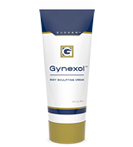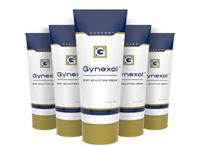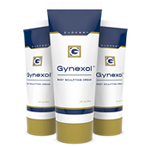
Gynecomastia solution: Perhaps you have heard of Gynecomastia and know anyone suffering from that condition. It’s possible that you’re one of the many men who have struggled with gynecomastia since they were adolescents and who have been the focus of bullying because of it. If so, you’re not alone. You are free to cease worrying about keeping your consciousness at this very moment. The condition known as gynecomastia is amenable to treatment with natural means. Such treatments can be your choice if you want to take pills, undergo surgery or topical creams
It is possible that taking a natural supplement like Gynexin with Alpha Formula is equally as beneficial as applying a topical cream or ointment for Gynecomastia solution to the skin. People who would rather not take medications but would like to reap the benefits of treatment can now take advantage of an excellent alternative. If you’re having problems with your man boobs, you should consider utilizing a cream called Gynexol.
What Are The Signs and Causes Of Gynecomastia?
Gynecomastia is a medical condition characterized by an abnormal enlargement of one or both of a man’s breasts. This enlargement is caused by the accumulation of fat and glandular tissue in the chest area, rather than by malignancy. When these two things come together, the result is gynecomastia. It’s possible that it’ll happen on both sides.
In other words, what are the warning signs and symptoms of this illness? What’s going to be our strategy? Let’s try to get a handle on gynecomastia’s anatomy, causes, and the various shapes it can take.
The majority of the adult men with gynecomastia have no symptoms but the following are some signs and symptoms of the condition:
- Enlargement of either one or both breasts
- Painful nipple or tender formation
- Nipple sensitivity with rubbing against clothes
Gynexol topical solution would be worth considering to treat these symptoms.
Gynecomastia Anatomy
Gynecomastia can be traced back to an increase in the amount of glandular breast tissue found in males. Estrogen is the hormone that controls the growth of glandular tissue in males.
Just below the nipple, the natural male breast consists of a layer of muscle in addition to the fat. Patients with gynecomastia have the appearance of having female breasts due to an imbalance of the hormones estrogen and testosterone. Gynecomastia is produced by fibrous glandular tissue and an increase in adipose tissue under the area of the nipple. A Gynecomastia solution can be opted for such as Gynexol Cream.
Susceptibility
Gynecomastia is a disorder that affects a very high percentage of boys. The majority of adult males who have gynecomastia do not report any symptoms, and the frequency of asymptomatic gynecomastia is greater in neonates (a newborn who is less than four weeks old).
The common disorder known as gynecomastia of puberty affects around half of all boys who have reached the middle of their pubertal development. More than ninety percent of these instances clear up on their own after a period of twenty-four months.
As people become older, the likelihood of them developing gynecomastia increases. An exhaustive investigation can identify the source of the problem in roughly 45–50% of situations. Gynecomastia is caused in babies by estrogen that is passed down from their mothers. Breast buds are a very typical finding in newborn males. Breast buds will typically fade by the age of six months, however some infants may have them for longer than that.
Puberty often brings about the development of breast buds in pre-teen boys. The buds have a potential lifespan of up to two years, but in practice, they are gone after just one year. An estrogen-producing tumour can also induce gynecomastia.
Puberty’s hormonal shifts are to blame for the development of gynecomastia in male adolescents. Gynecomastia is a condition that often affects males while they are in the early to middle stages of puberty. In most cases, it takes anything from three months to two years for it to go away on its own.
Causes of Gynecomastia
1. Early pubertyEarly puberty boys have higher estrogen levels than testosterone. Gynecomastia develops from estrogen-testosterone imbalance.
2. Disease
- Cirrhosis, also known as liver disease: reduces free testosterone because the adrenal glands produce more androstenedione, a steroid hormone that produces estrogen and testosterone, and the liver clears less of it. Gynecomastia occurs from an estrogen-testosterone imbalance.
- Starvation: Low gonadotropin levels, which produce testosterone in men, can induce gynecomastia. The adrenal gland’s regular estrogen production then generates a testosterone-estrogen imbalance.
- Male hypogonadism: Primary hypogonadism, or poor sex hormone production, can lower testosterone output. Hyperthyroidism increases sex hormone binding globulin (protein) and oestradiol.
- Renal failure (kidney failure) with dialysis: The Leydig cell, which produces testosterone or androgens in men, will malfunction in haemodialysis patients. Hormonal abnormalities such low testosterone, high oestradiol, and high luteinizing hormone arise from renal failure.
- Stress causes the adrenal glands to create extra estrogen precursors.
- Diabetic mastopathy—non cancerous breast lesions—can occur in long-term type 1 diabetic males.
3. The process of maternal transfer
Gynecomastia in a newborn boy is produced by estrogen from their mother, which is transferred through the placenta and is responsible for the condition. The development of breast buds is not uncommon in male newborns. Breast buds will often fade by the time a baby is 6 months old, but in some infants, they can remain for longer.
4. Medical Treatments
Medications that are taken to elevate estrogen levels in the serum. Ketoconazole, metronidazole, spironolactone, cancer chemotherapy, finasteride or dutasteride are all examples of medications that can reduce the amount of testosterone or dihydrotestosterone in the serum.
1. Early pubertyEarly puberty boys have higher estrogen levels than testosterone. Gynecomastia develops from estrogen-testosterone imbalance.
Medications that enhance estrogen-like action, such as digitoxin and other herbal medicines The drugs flutamide, bicalutamide, spironolactone, and cimetidine, as well as marijuana, all have the ability to inhibit the androgen receptors.
Certain medications, such as antipsychotic drugs, metoclopramide, and verapamil, are known to raise blood prolactin levels in males. Prolactin is a hormone that increases milk production after delivery.
Other medications, including isoniazid, amiodarone, antidepressants, human chorionic gonadotropin, proton pump inhibitors, and extremely potent retroviral treatment, have also been linked to the development of gynecomastia.
With all these causes discussed, a gynecomastia solution like Gynexol topical cream, can help you get rid of the discomfort and bad impact of gynecomastia in your life. Why wait if you can order your first tube of Gynexol right now? Visit our online shop to learn more about our breast-reduction product for Gynecomastia solution. We treat man-boobs. Our team is available 24/7 to assist you.


